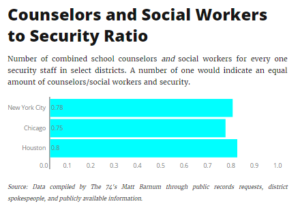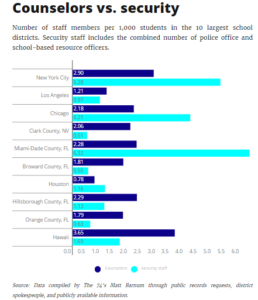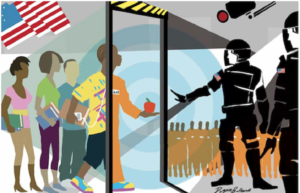When schools place a priority on law enforcement over counselors, it is no wonder children are not learning, as they are continuously funneled into a school-to-prison pipeline.
A new report from Matt Barnum at The 74 uncovers the problem by examining the nation’s 10 largest school districts. Barnum examined the ratio of counselors to security personnel in these districts, each of which has a majority Black and brown student population. And this is what his research uncovered: In three of the five largest school districts in America, and four of the top 10, the number of security officers exceeds the number of counselors.

Not one of the top 10 districts, where counselors may be particularly beneficial for low-income students, meets the American School Counselor Association’s recommendation of one counselor for every 250 students — most weren’t even close. The nearest to the standard was Hawaii with 274 students for every counselor.

“Houston says it is the only school district in the country with its own accredited police department. Los Angeles Unified School District also has its own police force. Other districts, like Hawaii, have no police presence in its schools, employing only safety personnel,” Barnum said.
“I’m not surprised, but it still concerns me really deeply,” said Dennis Parker, director of the ACLU’s racial justice programs, of the report. “It reflects an approach to school discipline and school safety that is ultimately counterproductive… If there were more emphasis on preventing problems rather than dealing with them when they happen, schools would ultimately be safer and students’ performance would be better,” Parker added, noting that schools are not an oasis from the racial problems plaguing the greater society.

Other studies have shown that most of the suspensions of Black children occur in the South, and that the presence of Black children, not crime, determines whether there is a police presence in a school. Further, implicit bias on the part of teachers, regardless of race, helps perpetuate the school-to-prison pipeline, as one study has connected the dots between bias and racial disparities in school discipline.
The problems of disciplining Black students — including expulsions and suspensions but also arrests and assaults — was brought into focus last year with the case of Shakara, a 16-year old girl who was attacked by a police officer at Spring Valley High School in South Carolina.



